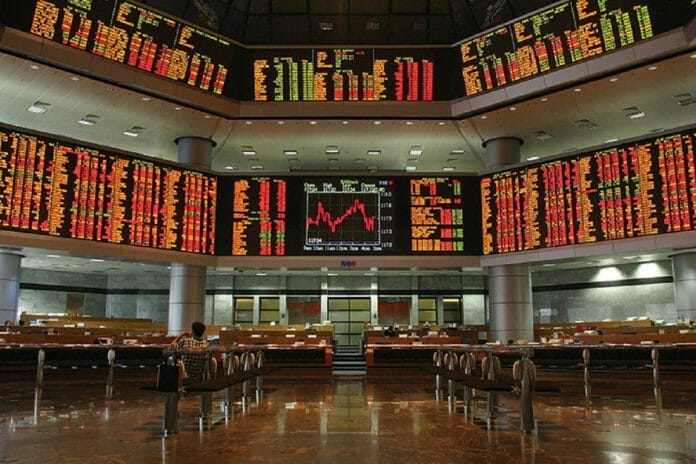Why am I writing this?
Do I foresee a stock market crash in 2024?
The answer is no. Personally, I’m not into forecasting and have no knowledge as to when, how and the size of the next market crash. However, I believe it is only wise to know that markets work in cycles: booms and busts. In boom times, the outlook is optimistic. During busts, the outlook is pessimistic.
As I write, the U.S. market (S&P500) seems to be on a perpetual all-time high. It is a nice place to be in for many who had invested in the U.S. for years now. The situation in Mainland China and Hong Kong is vastly different. So, this behooves questions like: “How high will the U.S. go and how low can China fall?”.
So, what’s the answer?
Mine is not to predict how high or low a market could go. Rather, as an investor who invests for the long-term, I believe it’s wise to prepare for both situations. I think a plan for boom times and busts is critical to build a sustainable portfolio.
But since a crash (bust) is more concerning, I will make a simple to-do-list which you can follow starting today in preparation for a market crash. This is so that in a crisis, you can snap up some good deals in the market and ‘fast track’ towards better returns (dividends + growth) in the future. They are as follows:
1. Emotion-Check
Investing has a lot to do with our emotions. It can be problematic. For example, during booms, people will become overly confident, optimistic and careless. It’s always the case when people can make easy fast money from the stock market. Many think that they are infallible. So, they ‘invest’ without building reserves. It causes them to fall very hard during a market crash.
During busts, people could become overly pessimistic, careful, and risk-averse. I find this to be common during prolonged market crashes. Many lost confidence in the stock market. So, they hoard cash without investing. Such causes them to miss opportunities to build wealth for the long-term. In short:
Most People:
Booms: Invest without building reserves.
Busts: Hoard reserves without investing.
As investors, we need to learn how to do the opposite. During booms, we could take it slow and not invest. During busts, we would invest more. This is practical as we always want to buy good and buy undervalued (cheap). But such requires us to have long-term thinking and adopt sound principles when investing.
Investors:
Booms: Slow Down and occasionally, do nothing.
Busts: Invest More.
2. Long-Term Thinking
This refers only to fundamentally solid stocks, which are the ones that delivered consistent growth in profits and operating cash flows while maintaining balance sheets that are strong and robust at all-times.
The objective of investing is not about the +30% or -30% in a short time. Rather for us, it is about how many shares of a certain good stock could we amass over a period of 10 years. It’s about the quantum. A ‘30% price dip’ on a stock that is fundamentally solid can be a blessing to a long-term investor for his objective is to accumulate, not to trade.
Think about it.
If you have a “trading mindset”, it is hard to manage a big portfolio (RM 1m). As the market is uncertain and you cannot foresee when a crash will happen, what will you do if your stock portfolio falls to RM 700k within a short span of time? I believe one with a trading mindset will panic and start to cut losses. This is how and why people with a trading mindset don’t usually have a big portfolio (this is compared to his or her overall net worth).
Now, let’s say your RM 1m portfolio consists of Maybank, Public Bank … shares. And this portfolio crashes. But, you know that your stocks had delivered profits, operating cash flows and dividends for the long-term. You know that they could withstand crises because they’ve done it before and have the finances to do so. In this case, why panic sell? It would be better for investors to invest and amass more of these shares during crashes at discounts.
At the end, investors will have more shares and earn more ‘dividends + growth’, which is how investors build bigger portfolios and become wealthier.
3. Have Cash Reserves
Heck. Even Buffett keeps billions of dollars in cash despite his successes. So why not us?
Some say: ‘Cash is trash. Thus, we should invest as investing builds wealth.’ This is a comparison between cash and stocks. To me, this shouldn’t be the case. My take is that cash and stocks serve two different purposes. Cash is about liquidity while stocks are about growth and wealth building. How can we compare a nice car with a plane and say that a plane is better?
There is no best or better investment. It’s a matter of suitability.
As investors, we can build cash reserves. Although they do not yield much, cash will come in handy during emergencies (allowing you to keep your investments) and during crashes (allowing you to grab more shares at discounts). But when is the best time to build cash reserves? That leads us to:
4. Use Valuation
Most people buy stocks based on prices. Investors do stock valuation.
When stocks rise (boom times), people tend to buy. However, investors will find it increasingly difficult to find good deals during boom times as stocks (even the fundamentally good ones) are increasingly overvalued and do not yield much in dividends. When there is nothing to invest in, just keep cash in FDs or in various platforms like KDI Save (offering 4% Effective Annual Rate for the first RM 50k in deposit) or flexi-loan accounts (save on mortgage interest).
Meanwhile, keep your emotions as there will be people (uneducated in the fine art of value investing) that would share their recent stock successes. Here, all of us can sit back, relax, and be happy for their successes. But please do nothing.
5. Have a Watchlist
What makes investors confident in investing during market crashes?
Take 2020 as an example. How is it possible for me to buy DBS at S$18+ a share and KC Lau to invest in Berkshire Hathaway at US$170-180 a share at that time?
The answer is – “We already knew what we want to invest in before 2020” To us personally, we already studied our preferred stocks years before 2020. We have knowledge on their business models and finances prior to the worldwide crash. We already put them in our watchlist. Our watchlists are built years prior to the crash. We did our homework before the crash, not during the crash.
So, if you don’t know what to do during a crash, it’s time to think of it now prior to the next crash. This is because when the next crash happens, it is too late. As such, the best thing to do to prepare for a crash is to first have your watchlist of stocks that you prefer to accumulate beforehand.
Conclusion:
Market crashes are normal and they happen. We just do not know when it shall happen and the size of it if it happens. It’s like an earthquake. But, we would be preparing for it as if it could / might happen tomorrow. This is so that we would be financially and emotionally ready to tackle it when it happens. For now, here are my 5 “to-do-list” to prepare for a market crash:
Ian Tai Financial Content Machine. Dividend Investor. Produced 500+ Financial Articles featured in KCLau.com in Malaysia and the Fifth Person, Value Invest Asia, and Small Cap Asia in Singapore.









